AI Translation[Case study]
JRCS Co.Ltd.
The ultimate balance of cost, accuracy, and ease of use. Coordinators can manage the translation from upstream, further enhancing their skills.
| Business category | Marine business, innovation business, lifestyle business |
|---|---|
| Challenges | Want to effectively translate the vast amounts of target documents needing translation |
| Benefit of introducing solution | Able to easily translate vast amounts of English documents that previously couldn’t be handled, and to use the time freed up by this to manage the overall task flow involved. This has helped them to advance their career by giving them time to study writing and so on. The ease of translation, even for minor matters, allows the content to be understood and incorporated it into their work, improving the performance of the company overall. |
JRCS Co.Ltd is a client constantly pursuing new innovations for the future, powered by its mission statement: “In any age the significance of our existence is to ‘Never stop the flow of sea cargo.'”
The rise in the number of foreign employees means more of its internal documents have to be globalized, requiring various translations.

We talked to Ms. Okamoto and Ms. Yasukawa of the Multilingual Support Office, Corporate Headquarters.
| Multilingual Support Office, Corporate Headquarters | |
|---|---|
|
This office is in charge of all translation and interpreting for the entire company. They field translation according to internal requests. They also multitask company-wide PR activities, preparation of sales promotion tools, and management of the in-company portal site. |
|
Office Manager: Miho Okamoto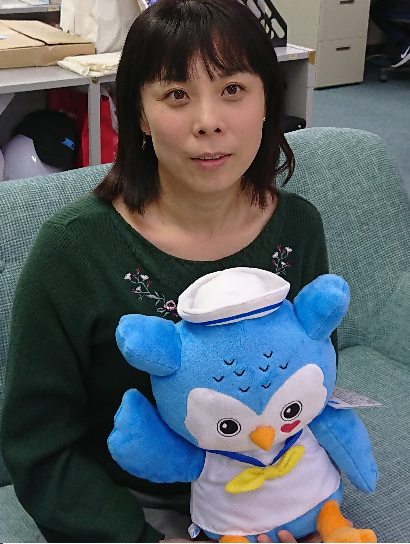 Together with Kikuho, JRCS’ official mascot. |
Nana Yasukawa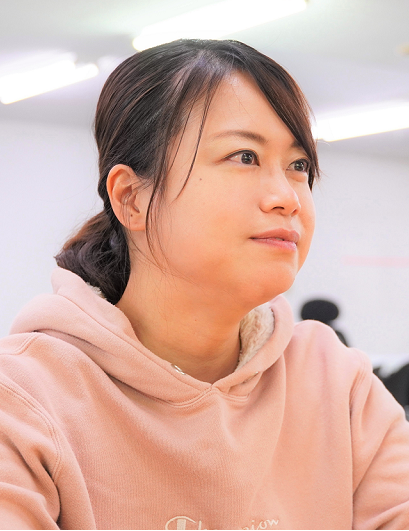 |
■ Translation of in-company information in real-time has increased because of the greater number of foreign employees as well as the standard external communications
― In what sort of situations is translation required?

Okamoto: Before, we handled documents for outside the company like emails, instruction manuals, and specifications, but with the changes in the company policy leading to the hiring of engineers from other countries, now we have to translate internal documents as well.
We have to translate company information in real-time so that the foreign engineers can perform their work properly.
We’re also in charge of interpreting and PR overall, so our workload has increased quite a lot.
■ Limits to how much can be done manually vs. the vast amount to be translated
― How did you handle the translation workload up until now? What sort of problems did you face?
Okamoto: Ms. Yasukawa handles the translations. As the amount of work to be translated increased, and the need grew for information to be communicated with no time difference inside the company, together with the massive amounts of specifications and shipping agreements to handle, we could see the limits to what could be done manually.
■ T-tact AN-ZIN®’s balance of cost, accuracy, and ease of use clinched the decision
― What made you choose T-tact AN-ZIN®?
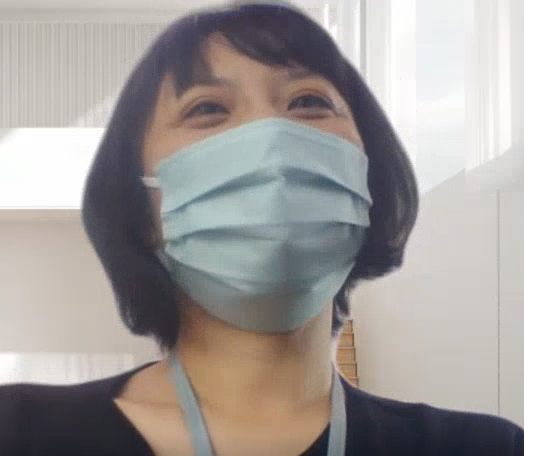
Okamoto: We did look at other services. They had different features, but the reason we chose AN-ZIN was because it was similar to Google Translate so that even employees who were complete beginners could use it. Another key point was the fact that even first-timers could use the reverse translation function. (*)
Some products of other companies had better translation quality in some cases, but T-tact AN-ZIN® had the right balance of cost, accuracy, and ease of use.
*A function that lets you retranslate translation results back into the source language, to check if the text is correct.
― How did you propose it to get approval for its adoption?
Okamoto: We drew up a written proposal comparing the tools. It was very cost-effective, so there was no objection to its adoption.
― Sometimes we hear on the news of mistakes by machine translation; was there any negative reaction inside the company to its use?
Okamoto: The company policy is that we should shift to more valuable work by digitalizinge what does not need to be done by humans, so there was no problem in adopting it.
■ Setting the priority order for documents to be translated, and sharing information in real-time through the speed of machine translation
― How do you use T-tact AN-ZIN®
Okamoto: There are two main ways.
Firstly, we use it for translation in the Multilingual Support Office. In some cases we post-edit it (edit the machine translation), in others we use it as it is. We decide how to translate particular documents by setting a priority order for them and using the speed of machine translation to provide information in real -time.
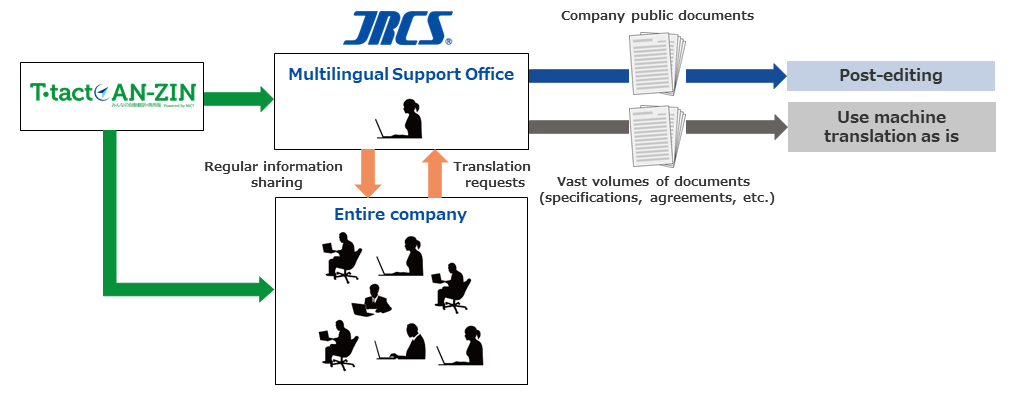
We also have around 50 staff working on checking trouble, day-to-day emails, and translation of technical materials. Depending on the nature of the document, sometimes those staff request translation by our office.
■ Able to translate documents that would have never been translated before; increased translation output with a decreased workload. The ability to translate easily has increased understanding of tasks in the company, enhancing performance
― Has there been any change in your work since adopting T-tact AN-ZIN®? Has the volume of work to translate decreased?
Okamoto: Actually I think the number of requests for translation have increased since we adopted T-tact AN-ZIN®. Now people request us to handle small jobs that before they might have wanted translated but refrained from asking us.
The amount of translation has increased, but our workload has decreased. T-tact AN-ZIN® is a great partner. Maybe it’s the hardest-working employee in the company [laughs].

Yasukawa: I think it’s helping to raise performance inside the company, because we can get a rough understanding of even high-volume specifications from other countries to help us during projects.
Okamoto: We have to deal with shipping agreements that run to thousands of pages that would be hard to translate manually, but with T-tact AN-ZIN® we can translate them easily. It’s good enough if we can roughly understand the meaning, so it’s such a help that we can easily translate documents that we couldn’t handle before.
■ Helps the career development of translators

Okamoto: Ms. Yasukawa, who is in charge of translation, can get by with just editing for a lot of jobs since we started using T-tact AN-ZIN®, so now she has more time to work on developing her own skills in pre-editing and writing. It’s really great that she can spend time on education to develop her career rather than being stuck just translating all the time.
She shares what she learns with us, which further increases her motivation. She’s investing more time in educating others now so that she can be not just a translator, but someone who makes a difference to the company environment.
Our office also handles PR for the company, so we can spend more time on that thanks to our translation workload having gone down. We intend to focus more on promoting the company externally from now on.
■ A year spent sharing information in the company to ensure effective use
― T-tact AN-ZIN® seems to be effectively used in the rest of the company as well as your office. How did you explain how to use it to your coworkers?
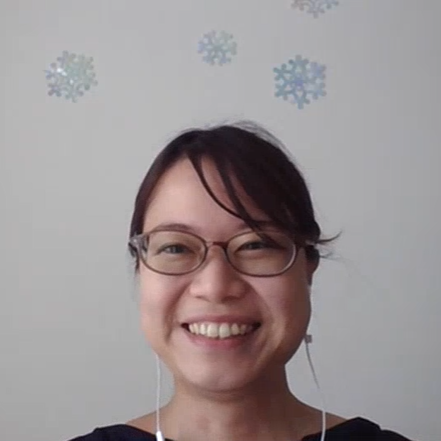
Okamoto: Ms. Yasukawa spent a year sharing information about the benefits of adopting machine translation through an in-company email magazine. Once a week she prepared and posted a video showing how to do pre-editing and other hints. When it was first adopted, we spent time sharing information to create a positive image of it.
The pre-editing tips we shared generated a big response, because people realized that the expressions in Japanese they’d been using were hard to understand, as they often left out the subject or didn’t explain things in full.
Yasukawa: The quality of the original text is important to effectively use machine translation, but many people assume that AI can understand anything. They don’t realize that what they’re writing is hard to understand, so that’s why we had to point out this fact.
■ Fully satisfied with the support from TOIN
― What is your impression of it now that you’ve used it?
Yasukawa: We often use it with PDFs that require OCR, and we can ensure consistent use of terminology by adding terms. The reverse translation feature also gives reassurance to even first-time users in the company.
It would be great if we could use it offline for people onboard ships as well.
Okamoto: When we ask for something to be improved, we get a response straightaway, it’s reassuring to know that TOIN is willing to stay so close to its clients. We’re thoroughly satisfied with the support.
For JCRS, bringing efficiency to their translation workload not only lifted the company performance, it also allowed their staff to further enhance their skills. Their success with applying digital transformation to translation was thanks to the effort they spent in sharing information inside their company for a year.
TOIN holds seminars on machine translation from the unique viewpoint of a translation provider whenever required, to teach effective ways to pre-edit and use these tools.
With our 58 years of trust and proven track record, we provide you with full support both before and after adopting this service. Feel free to consult with us.








